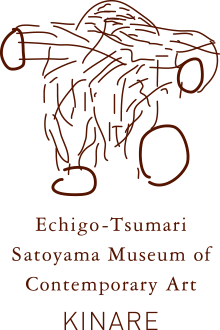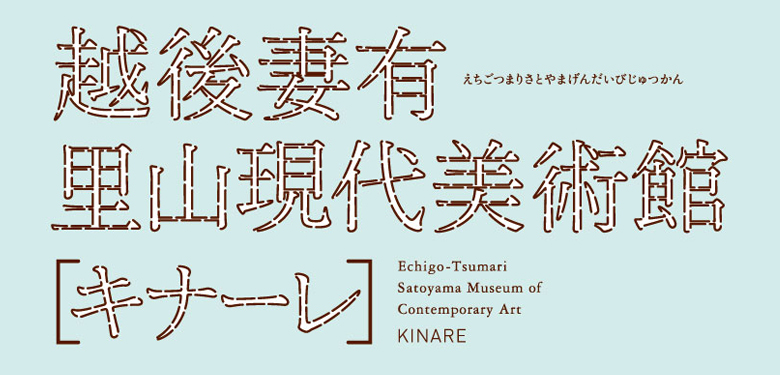



ECHIGO-TSUMARI: A RICH WORLD OF ART, NATURE AND HISTORY
About 150,000 years ago, descendants of the new species of human, the Mitochondrial Eve homo sapiens, who had first emerged in Southern Africa, migrated across the Eurasian continent. Then, 4,500 years ago during the Middle Jomon Period, their descendants settled in the Tsumari region, an area located on the river terraces of the Shinano River where they could enjoy a life of abundance.
Driven by curiosity and the search for food, humans in all corners of the globe adapted themselves to the respective features of the land and climate. The people of the Tsumari district, who endeavored to grow rice amid a mountainous landscape prone to heavy snowfalls in winter, accepted others who arrived in the Echigo region, who could only live here, and created an affluent community by making accommodations with the natural environment. They truly were “humans are part of nature.”
Urbanization (transitions in industrial structures and abandonment of agriculture), a constant focus on efficiency, and market fundamentalism seen in the modern and contemporary eras have ridden the wave of globalization and directly impacted rural areas. Amid depopulation and the aging of the population, the strength of rural areas was wanted and it looked as though they had no future prospects. However, the people of this land accept the high mountains, the heavy snowfall, the aging of the population coupled with a declining birthrate, and the changes in the industrial structure as given conditions that they have to accommodate. In fact, they believe that they can actually make use of these given conditions to demonstrate that Echigo-Tsumari is a land for people, with universal qualities that link it to other rural areas.
The resources we possess on Earth are finite. From the perspective of individual humans, the sea is wide and mountains are high. Yet, they are finite. Turning resources that we think of as negatives into positives is what the artists and architects participating in the Echigo-Tsumari Art Triennale have done. The activities of supporters who have participated in the “Kohebi” (little snakes) group have created a platform that transcends regions, generations and genres, giving rise to a form of communication through collaboration.
Over the course of the four Echigo-Tsumari Art Triennale to date, a number of facilities have been created and artworks that play a part in the region through the utilization of akiya (unoccupied houses) and schools that have been shut down have exceeded 30. Although these works shine by themselves, they also serve to highlight the attractions of the region, villages and landscapes where they stand. The artists entered the region and began to change it. Seasonal terms for the four seasons, including winter, used in haiku poetry; the harsh topography; work-sharing, where people help each other out; the joys and festivals of harvest. Here, art has begun to function as something that expresses the relationships between people and nature, civilization and society. Art has functioned and been treated in the same way as a baby in the relationship between humans and nature.
The Echigo-Tsumari Satoyama Museum of Contemporary Art / KINARE is a space in which one can actually sense the intricate interplay of the world, modernity, rural life and satoyama culture. Like a set of nested boxes, a world is embedded within a single region. In the same way as the whole of this archipelago is embedded within the Echigo-Tsumari region, this will be a facility in which Echigo-Tsumari is embedded. Just like the Matsudai Nohbutai (Matsudai Snow-Land Agrarian Culture Center) and Mount Joyama are nestled within the satoyama landscape, this provides a portal through which one can experience the entire region.
We hope that the meaning of art and art museums will be challenged here.
Visitors to the museum will see the synchronicity of the world colliding and being overturned here in the Shinano River, the land of Echigo, deciduous broad-leaved trees, settlements, rich scenery, civil engineering structures such as tunnels, Jomon Period earthenware, and blizzards. We want visitors to ask “Why?” “What for?”
This building was originally built in 2003, to resemble the tents of the caravan of merchants for whom Echigo-Tsumari was an oasis. Revamping it after 10 years to turn it into what it should have been is a groundbreaking endeavor.

Fram Kitagawa
General Director, Echigo-Tsumari Art Triennale 2015
http://www.artfront.co.jp